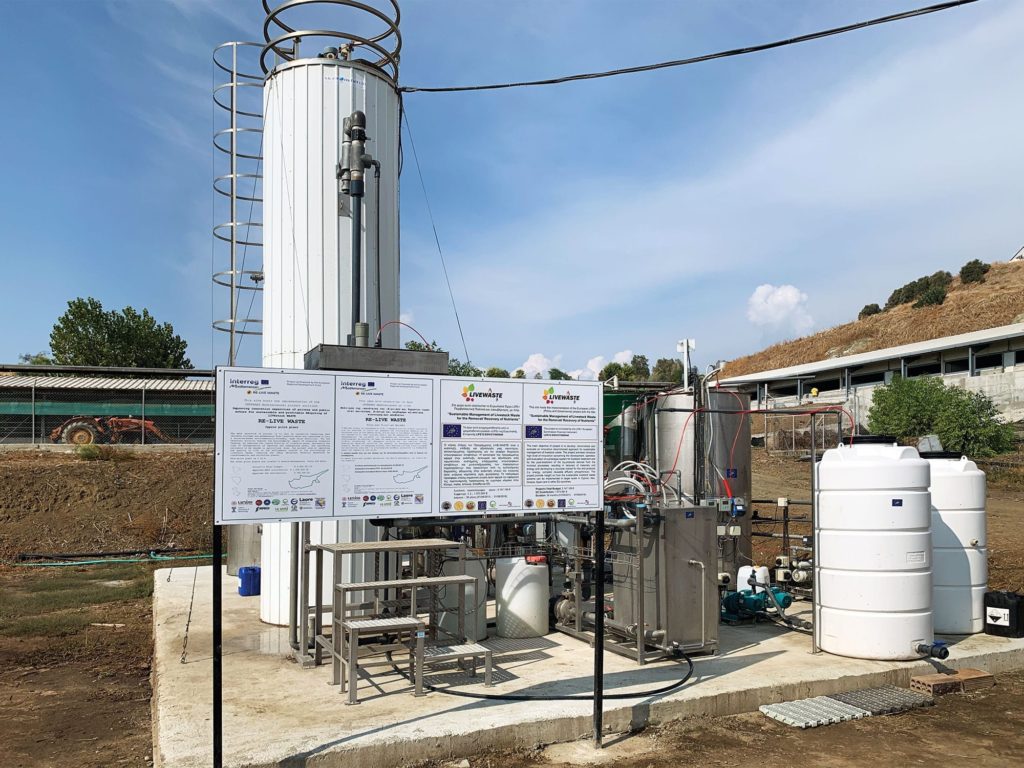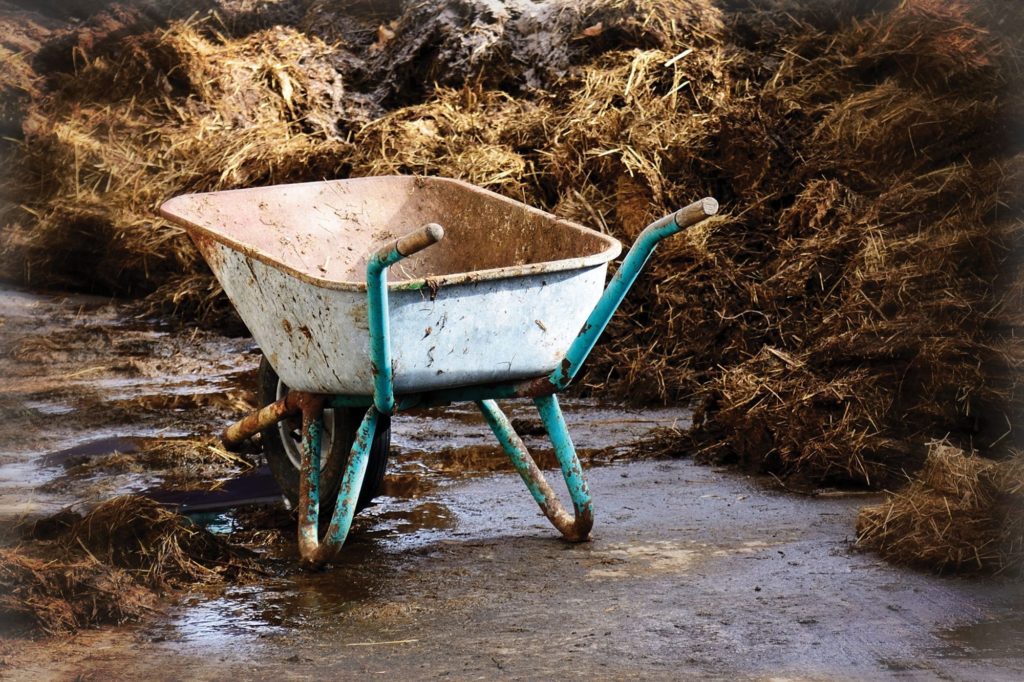Turning Livestock Waste Into Fertilizer
Jordi Domingo Calabuig and his partners at RE-LIVE WASTE saw an opportunity in livestock waste and turned to developing and testing innovative technologies for making eco-friendly fertilizer.
Repurposing Livestock Waste
Increasing demand for meat has pushed farmers to farm more intensively in order to speed up and improve production. This process also caused the accumulation of large amounts of animal residues derived from the activity that, if not well managed, were responsible of severe environmental concerns. Following a circular economy approach, RE-LIVE WASTE intends to develop and test innovative technologies to turn this livestock waste into an eco-friendly fertilizer. Jordi Domingo Calabuig is a project officer at Fundación Global Nature, one of the project partners and is directly involved in the development of legislative and financial support to promote the use of the resulting product (struvite) as a fertilizer.

Jordi, decades ago, livestock waste was already the main source of fertilization for agricultural lands. The RE-LIVE WASTE project is trying to promote this again. What went wrong during this time that makes us talk today about an innovative solution of what it seems to me an old and traditional practice?
It is basically a problem of volume. The average density of animals per farm has increased dramatically in the last decades. This means larger volumes of waste, as well as larger storage facilities. If a farmer cannot store enough livestock waste until the proper time of the year for spreading it in the field, the waste will end up in the wrong place and at the wrong time.
We are convinced that we will have a stable legal framework in the future for struvite and other fertilizers coming from livestock waste.
The main result of the project is the development of an eco-fertilizer from livestock waste called struvite. However, at the moment there is still a need of adding fertilizer to keep nutrients available (namely nitrogen and phosphorus) to maintain the levels of crop production. From where do fertilizers come from and why do you think we should promote the use of livestock waste instead?
Phosphorus is a key element in agriculture for increasing crop fertility. The present consumption of phosphorus is based on rock phosphorus, a mineral extracted from mines and a finite resource. From the EU perspective, it is strategic to find new sources of phosphorus. Recycling it from livestock waste (and other sources) is a perfect option: on the one hand, it reduces the dependence on own or imported rock phosphorus; and on the other hand, it helps to close nutrient loops and reduces the impact that phosphorus has on the environment.
With the RE-LIVE WASTE project you are trying to develop an innovative solution considering the point of view of the farmer and of society. Why do think both actors are considered separately?
Farmers are at the end of the line (or at the beginning?). This makes them very vulnerable. For example, when sustainability is introduced in supply chains, most of the responsibilities end up in the farmer’s hands as if they were the only ones to change their behaviour. In this case, it is exactly the same. There are plenty of variables to consider before calling the struvite production a definitive solution and they depend on different stakeholders. Of course, farmers will have to adopt the technology and use it properly. But society will have to help pave the way… for example, by the appropriate regulation framework, by recognizing farmers’ commitments, and by promoting biofertilizers.
One of the objectives of the project is to analyze the financial viability of the technologies developed. Several factors can affect this viability. One important factor could be, for example, the size of the farm which can be quite different across Europe: in the Mediterranean basin, they are quite small compared to northern Europe where farms include large areas. Within RE-LIVE WASTE, how are you dealing with these socio-economic differences between European regions? And how can these differences affect the subsequent deployment of the new technologies developed?
The project is not about testing struvite production but about fine-tuning the struvite production at farm level. This entails a lot of work for understanding all the variables that will make the process feasible: farm size, types of waste, preparation of waste, and the added value of the different outputs. RE-LIVE WASTE tests all this in four pilot plants in four Mediterranean countries (Spain, Italy, Bosnia-Herzegovina and Cyprus), and in the transfer activities we try to ensure that the lessons learned are also applicable in other EU countries. It is unlikely that the project will deliver a “single solution” for struvite production at farm level for various reasons: farms are very different even in the same region, the technologies evolve very fast, there are other technologies for phosphorus recovery that can co-exist with this one, and the value of outputs may also change in the future.
The project acts at three different levels: at a local scale, training and convincing farmers; at a regional level, building networks with different actors (farmers, administration, SMEs), and at a European level, trying to update the EU legislation related to the use of fertilizers to include struvite. What are the main difficulties you are facing in each level?
At local level, the main difficulty is making the technology feasible. It is also quite challenging to convince farmers to adopt a new technology when it is not completely ready… a risk no one wants to take. At regional level, the aim is to prepare the ground for technology transfer. Member States and regions have different tools for promoting struvite and other nutrient recovery solutions. We want them prepared to ensure that every single option will be explored for finding solutions for livestock waste management. At the EU level, the objective is to ensure that future regulation will be realistic and applicable in real farms. We are sharing our results and lessons learned with experts and the European Commission, so we all can benefit from a solid legal framework.
The new Common Agricultural Policy (CAP) is being developed and the investment on research and innovation will be encouraged so farmers and rural communities can benefit more. How can the RE-LIVE WASTE project and the actors involved take advantage of this?
CAP is enormous and the challenge is understanding at a global scale how to include our solution in the scheme. It is equally important for each Member State (and in most cases at the regional level) to understand and integrate the options for promoting livestock waste solutions like struvite production. This is why the project foresees actions for guiding decision-makers and helping them to include struvite production, as we are convinced it is a win-win option: it reduces an environmental impact, it is directly linked to the compliance of several EU Directives (Nitrates, WFD) and it helps farmers to have new incomes.

The project ends by July 2020 and you asked for an extension of the project until January 2021. How are you planning to keep the objectives of the project and the results obtained alive after that date?
Before the official RE-LIVE WASTE project ends, we want to make sure that we deliver real solutions to farmers. If we manage to reduce livestock waste problems by making struvite production competitive from an economic point of view, then the technology will deploy itself – we are convinced that we will have a stable legal framework in the future for struvite and other fertilizers coming from livestock waste. The consortium comes from previous projects and initiatives… so we expect to keep working on improving struvite performance. Waste is the future!